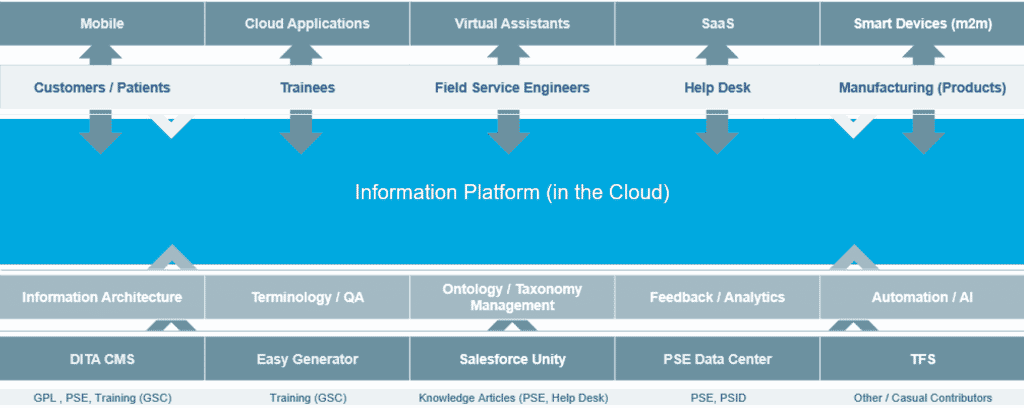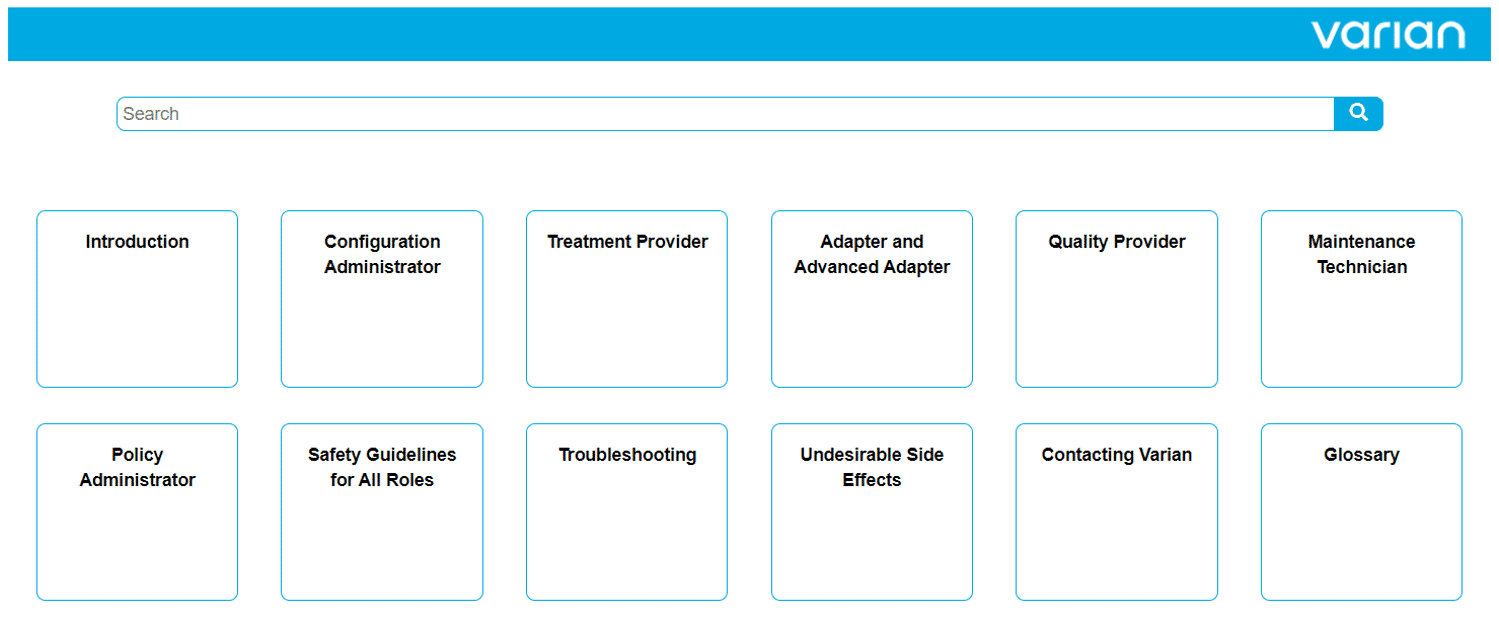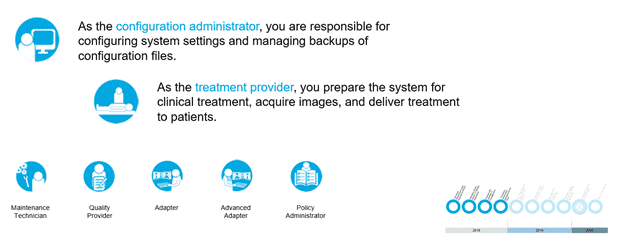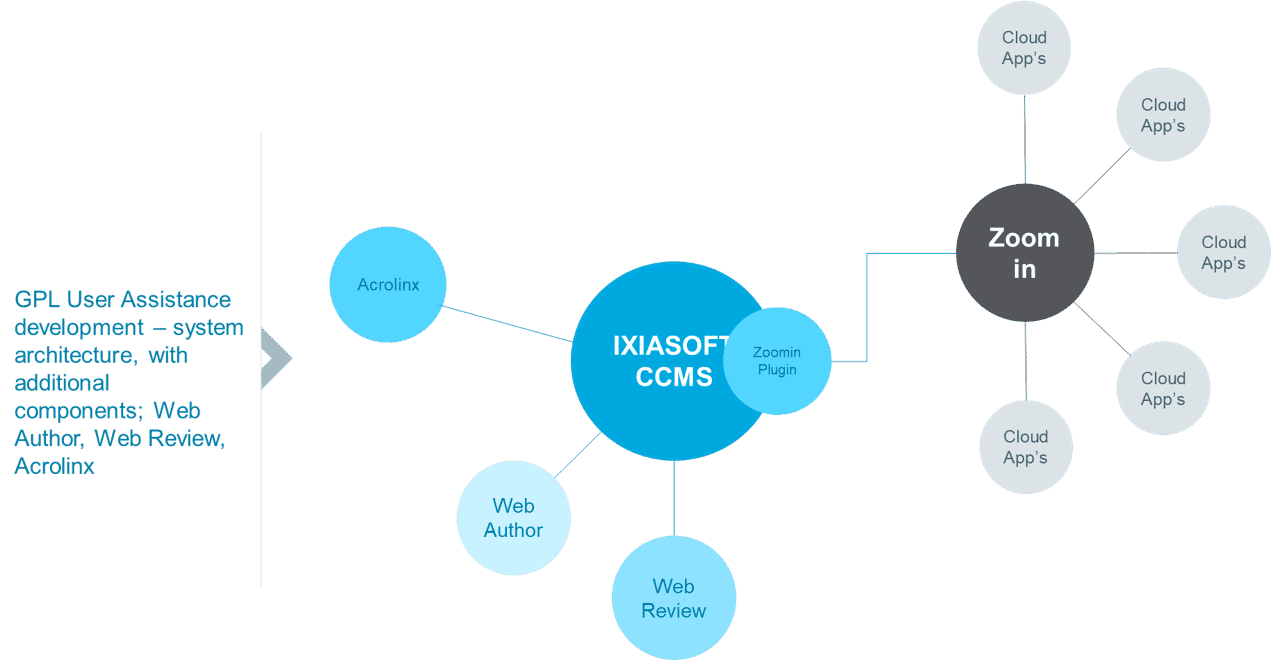About Varian – A Global Leader in Radiation Technology
For over 70 years, Varian have been committed to creating simpler, fully integrated, and more intelligent ways to fight cancer. A global leader in developing and delivering multidisciplinary cancer care solutions through its strategy of always putting cancer patients at the center of its thinking, Varian is dedicated to forging a new, more unifying, smarter standard of oncology—connecting us all through more intelligent data, insights, and solutions to realize its vision of a world without fear of cancer.
Nicholas Rowlands – Manager GPL Information Architecture and Systems
The force behind GPL Information Architecture and Systems, and Varian’s digital transformation journey is Nicholas Rowlands. Nick is an information systems architect, global information management strategist, and DITA XML CCMS specialist with over 30 years of experience in technical documentations.
Nick is the Manager of the Information Architecture and Systems team and over the years he has implemented global information management strategies, deployed DITA XML content management and translation management solutions and workflows.
Varian’s Digital Transformation Journey – How They Started
Like most large companies, Varian has a business strategy in place. When Varian started their digital transformation journey, they developed a strategy that is in line with various Varian business goals.
For example:
- The need to support smart devices leveraging AI and machine learning.
- The delivery of anything as a service.
- The need to transform information to be more molecular in structure as to deliver information by the channels of the future such as the Internet of Things and Chatbots.
After a successful digital transformation workshop in Palo Alto, California, Varian brought together stakeholders from global customer service, user experience, training, digital marketing and global product labeling. GPL presented a mission, vision, and business case to its executive management.
The Mission
Varian’s digital transformation commitment focuses on users and designing or redesigning information around their needs. The objective is to provide them with fast and easy-to-access information wherever they are.
Varian’s Vision for Digital Transformation
At the foundation of the digital transformation infrastructure is the contributor layer or content layer. Varian has systems that are used to contribute content into the Information Platform in the Cloud such as MadCap IXIA DITA Component Content Management System (CCMS), Easy Generator and Salesforce Unity.

The next layer is the technology layer which includes Information Architecture, Technology/QA, Ontology/Taxonomy Management, Feedback/Analytics and Automation/AI. This is the technology needed to support Varian’s information platform. These are the underlying structural elements that Varian needs to have in place to support its information platform in the Cloud.
And of course, Varian has its consumer layer. These are the consumers of the information platform. These consumers include customers/patients, trainees, field service engineers, help desk and products themselves.
And lastly, at the top information hierarchy, Varian addresses the channels that are available to access the information platform. These channels include mobile devices, cloud applications, virtual assistants, software as a service, and smart devices where machine-to-machine communication could take place.
Business Case
Varian’s business case focuses on six key benefits and not of all of them are linked to cost savings and return on investment.
- Enabler of business long-term strategy. Digital transformation supports and enables long-term business strategies.
- Differentiator to increase market share and revenue. Acts as a differentiator that can increase market share and revenue by providing intelligent information solutions into Varian’s products.
- Accelerated market introduction. Introduces process optimization automation that will accelerate market introduction as improved access to information can accelerate knowledge transfer and product adoption.
- Customer satisfaction. Contributes to customer satisfaction by providing user-centric context-driven, high-quality information; thereby, reducing customer complaints.
- Improved standard of care. Support and improve the standard of care provided to patients by facilitating cancer care providers to explore innovative ways of sharing information with their patients. Cancer care providers can also provide patients with access to the right information in the right context to make informed clinical decisions.
- Various operational efficiencies. Operational efficiencies such as continued translation cost savings, reduced translation turnaround times, reduced information delivery time, improved quality and reduction of waste in content, and reduced help desk response time.
How it Impacted Varian and its Customers
After the first experiment with ePUB, Varian realized that this format was unsustainable and that it needed a better solution. The answer was Oxygen WebHelp which Varian called Responsive User Assistance (RUA). This is how Varian was going to get responsive user assistance on a mobile device. At the time Varian didn’t have a server to deliver the content, so it decided to develop an app named, Varian Assist.

The application uses a Salesforce API to pull the content to the app from a Salesforce community site where Varian usually posts PDF content. For the app, Varian generates the RUA using Oxygen WebHelp, the plugin for its MadCap IXIA CCMS, and uploads a zip package to Salesforce which is then downloaded by the app.
This development led to the first delivery of a combined Instruction for Use (IFU) and training information on a mobile device. This enabled users to access information offline at the device, putting information at their fingertips. Varian lived up to its digital transformation mission of providing information from anywhere. And not to mention, also translated into 20 languages.
Harmonized Information Architecture to Deliver the First End-to-end, Role and Workflow based, IFU Across Systems
Varian was able to use the Varian Assist mobile application in the next of its digital transformation victories – the user assistance and training for the flagship Ethos program. The key objective was to deliver a harmonized user experience across the three systems that make up the Ethos adaptive therapy solution.
In the user assistance for Ethos, Varian adopted a user-centric, harmonized approach to tailoring content to users by their roles and their workflows.

Navigation aids, including new information types, make it easy to find information quickly for any of the Ethos product components – planning, adaptation, treatment and monitoring.
Again, Varian is using the Responsive User Assistance output from its IXIA CCMS as the basis for its content deliverables.
Working with Product Management and UX, Varian defined the personas around which it needed to design the information. Each role is described, and icons are used throughout the user assistance to identify information for each role. Highlighted below is the configuration administrator and treatment provider roles, with the other defined roles below.

From quick reference questions to routine procedures, procedural videos, training and safety, Varian designed the information architecture around some of the key concepts of minimalism:
- Core tasks and goal-orientation
- Getting to work immediately
- Immediate assistance
Implementation of Zoomin In-Product-Help for Cloud Applications
An opportunity to continue the journey came when Varian set a business initiative to move some of their software to the Cloud. In developing a solution for hosting content for their cloud-based applications, Varian worked together with Zoomin to streamline and automate the creation and delivery of In-product Help for their users.

Some of the Key Successes of this implementation include:
- Ease of implementation for development teams
- Seamless integration with IXIA CCMS
- Scalability to other products through initial success factors
- Ease of implementation has driven the adoption of Zoomin into Cloud development teams and products
- IXIA CCMS ensures rapid publishing of content to Cloud applications
Implementation of Acrolinx AI
Acrolinx AI was a deliverable on Varian’s digital transformation roadmap. This became the last of its planned digital transformation implementations. Varian implemented Acrolinx AI to systematically manage terminology usage, clarity, consistency, tone and language.
The Acrolinx AI application gives real-time guidance to users who are developing content. It integrates style guides, content strategies and analytics seamlessly into the content development process. The extensive AI analytics allow the team to measure, analyze and track trends to continually improve content quality and system configuration.
Redesigning Digital Transformation Strategies to Adapt to Change
“We noticed that the organization had to adapt to change due to the impact of COVID-19.” Says Nick Rowlands. “Training teams were no longer able to travel to deliver training, digital marketing teams had to adapt to virtual conferences. In other industries – such as telemedicine – things were changing so quickly, they found themselves in the future!”
Varian’s training team was faced with a big challenge. Not only did they have to create a large amount of eLearning content for their new intelligent online learning and training platform, but they had to translate that content too – quickly and economically.
Varian seized the opportunity of working with the Localization team and the Training team to develop a Machine Translation (MT) infrastructure and workflow to fast-track localization of eLearning for their digital learning platform.
Now, More Than Ever, Digital Transformation is Becoming a Business Imperative
Technical Documentation teams need to start, accelerate, or change direction on their digital transformation journey, because of the lasting impact of COVID-19.
“When starting your digital transformation journey, it’s important to align your strategy with business goals, so that you can demonstrate how your digital transformation strategy becomes an enabler for those business goals; thereby, turning a business imperative into an intelligent information strategy.” Says Nick.
“Look for opportunities to accelerate your strategy. We were fortunate to do this when Varian set a business initiative to move some of their software to the Cloud. It was an opportunity for us to work together with IXIASOFT and Zoomin to streamline and automate the creation and delivery of In-product Help.” Nick concludes.







